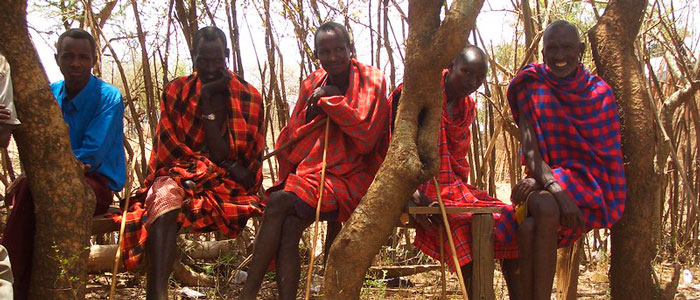Oldonyonokie/Olkeri Maasai Pastoralist Heritage, Kenya
GIAHS since 2011

Detailed Information
Site location: Oldonyonyokie and Olkeri Group Ranches, Southern Kenya
Area of GIAHS: 160 000 km2
Population working for this system: 500 000 persons
Topological Characteristics: scarce fertile soil resources
Climatic Classification: arid dry climatic conditions
Ethnic Groups/Indigenous People: Maasai community
Primary Income Sources: agropastoralism system
--------------------
Global importance
Maasai agro pastoral system is a synergic system adapted to arid dry lands of Kenya. It includes the understanding of nature especially with climate and wildlife. Sustainable and productive, Maasai communities have developed a way of life allowing to product food crops and most of the communities’ needs respecting their environment.
Today, the combination of the loss of access to critical grazing resources, the increased population pressure from both within Maasai society as well as through the influx of other land-users, the sub-division of common property systems and a range of cultural factors, unfortunately has created a set of incentives that discourages Maasai from their traditional sustainable practices and leads to the adoption of unsustainable uses of natural resources.
Food and livelihood security
Maasai agro pastoralism techniques have allowed them to satisfy their needs for ages. Their system has provided them money, meat, milk, maize meal, beans, wool but also forage, water and manure for the lands. At the same time, being sustainable for its used lands, Masaai people can also harvest what they need in the forest they live in: edible fruits, seeds, honey, medicines, veterinary products, etc.
With globalization, Maasai people have try to change some strategy by selling animals to get money but their self-sufficient circle remain important for their livelihood security.
Biodiversity and ecosystem functions
Maasai raise different species of animals such as cows, goats, sheep and buffalos with some of them which are endemic from the region. Not only focusing on the biodiversity of animals, Maasai also grow plants such as endemic maize and beans local varieties.
Agropastoral Maasai’s management is respectful of the environment and strongly linked to the wild life. Being sustainable, they share the resources with the wild life without destroying it and can continue harvesting in the forest. Moreover, cultural values encourage not killing the wildlife except in a condition of threat. Nowadays, the conversion of rangelands to crop-land and the decline of pastoralism and its tenure system is one of the major threats to wildlife.
Knowledge systems and adapted technologies
Knowlegde has been accumulated for centuries to keep alive this sustainable and adapted system. Living in this area requires a high understanding of the nature and the wildlife to survive but also to adapt their breeding management to the situation.
The Maasai use three informal rules to manage their open access land. They avoid used areas, keep appropriate distance from other groups and avoid areas recently vacated by others. Moreover, they select disease-resistant young, ensure water and forage availability prior to livestock movement and decide to move livestock in relation to mineral (salt licks), forage and shade needs.
Cultures, value systems and social organizations
Intricate social interactions between and within Maasai groups ensure this livelihood and livestock security. First of all, elders direct warriors have to undertake ecological scouting (for water and forage plants) and draw up livestock movement plans. Warriors supervise grazing techniques and direct grazing behaviour and movements. Then herd diversity and splitting ensures long-term sustainability, cost-effective productivity, improved degraded lands, and reduced bush encroachment by division of herding labour within Maasai groups.
Shallow communal wells are managed informally by clans; and large ritual ceremonies occur only when adequate water and pasture are available to support all guests.
Remarkable landscapes, land and water resources management features
This Kenyan landscape is remarkable in the sense that it is strongly linked to Maasai agro pastoral system. Indeed, the strong conservation values of Maasai culture provided for deep synergies with wildlife. They have co-created and maintained the very landscape in which wildlife can thrive. This area is highly representative of traditional Maasai pastoralism in Kenya and its conservation is relevant for the sustainable development of rangelands in Southern Kenya and Northern Tanzania.

